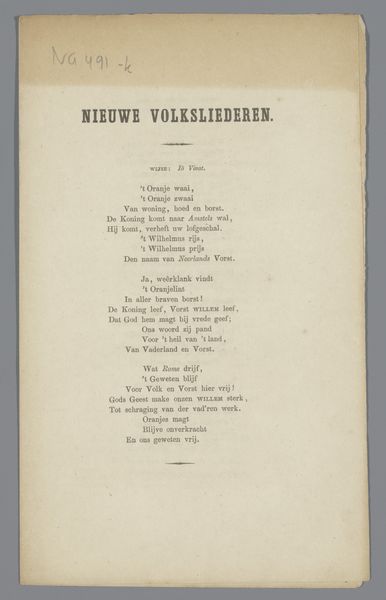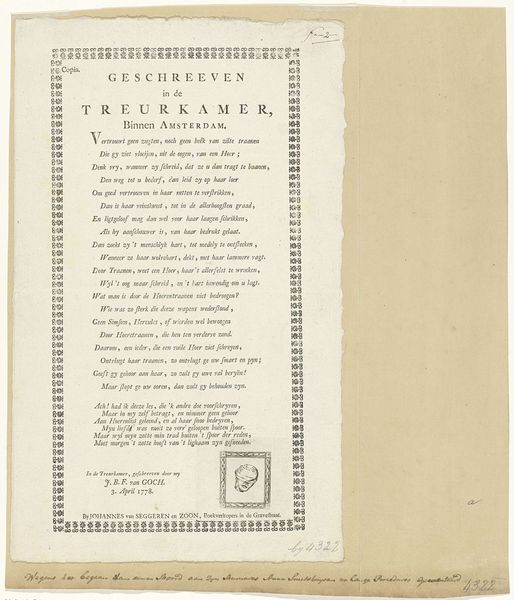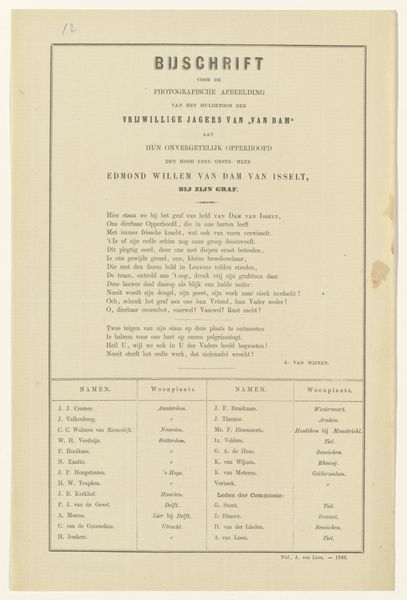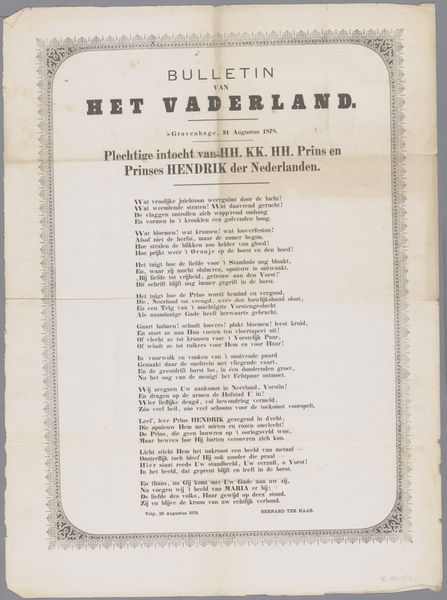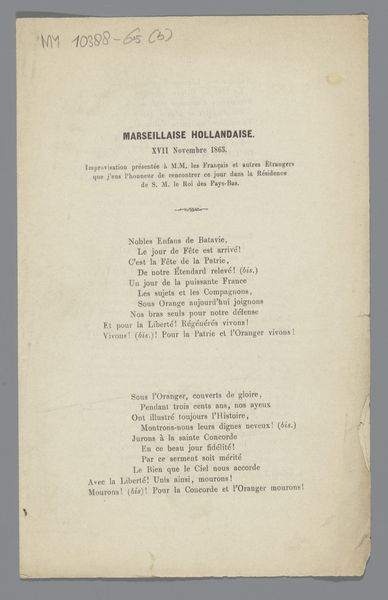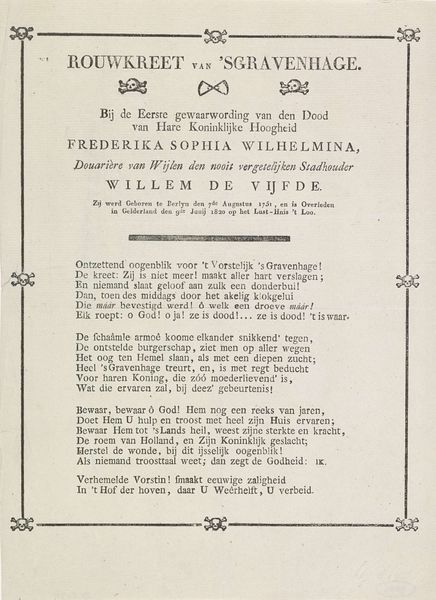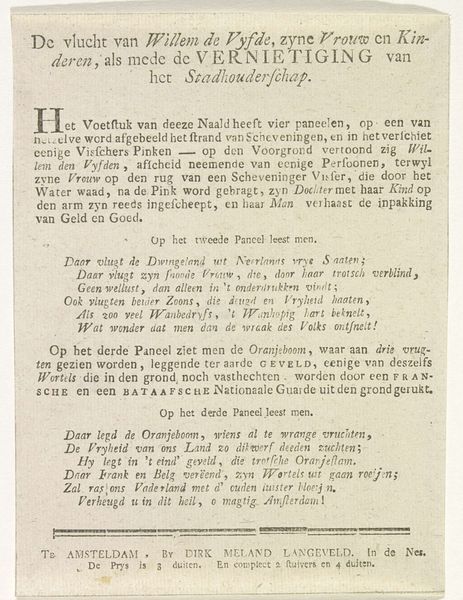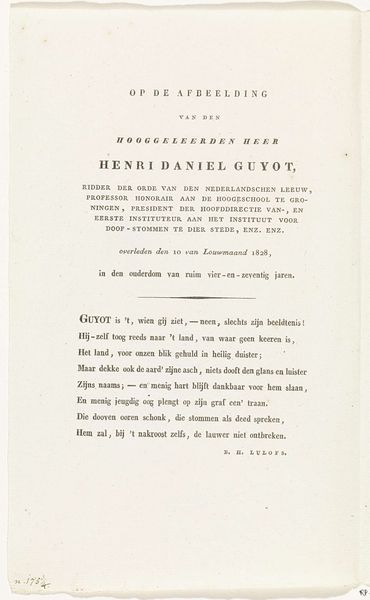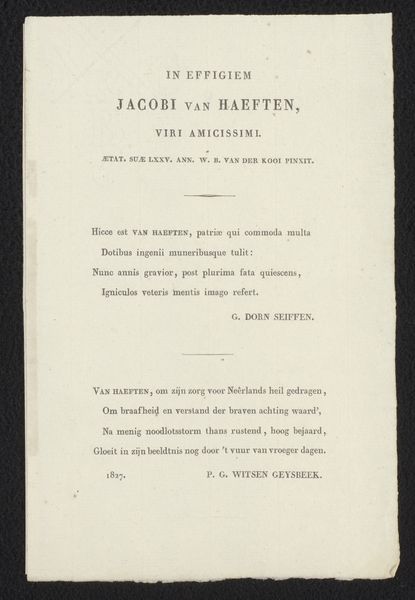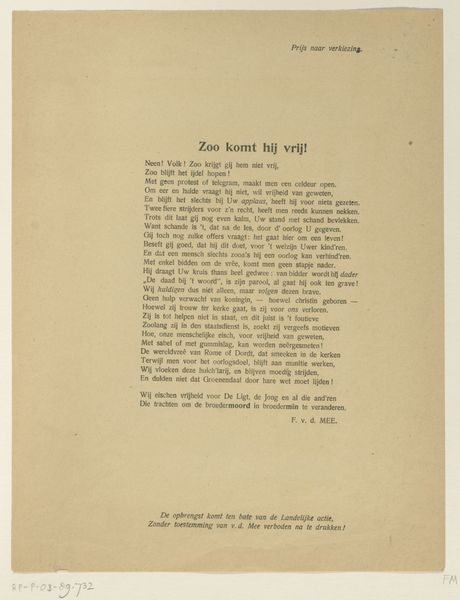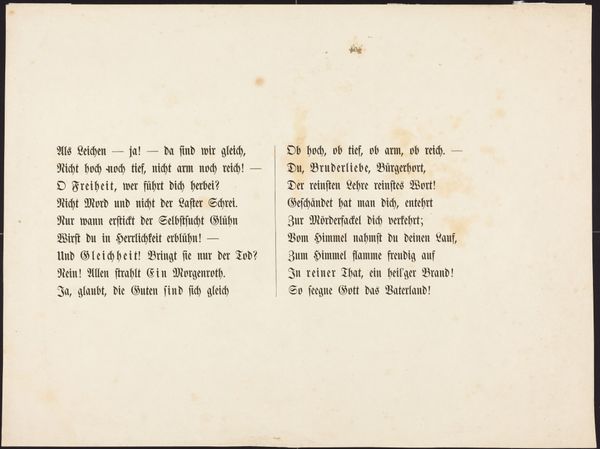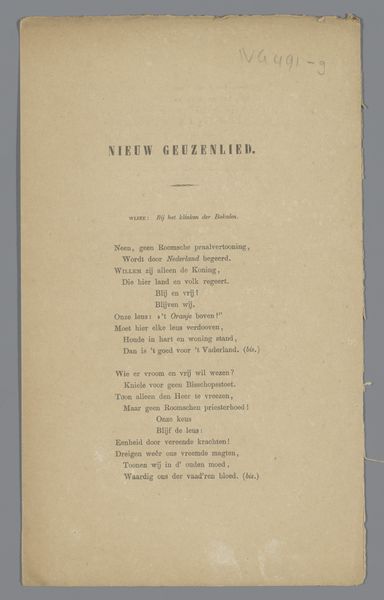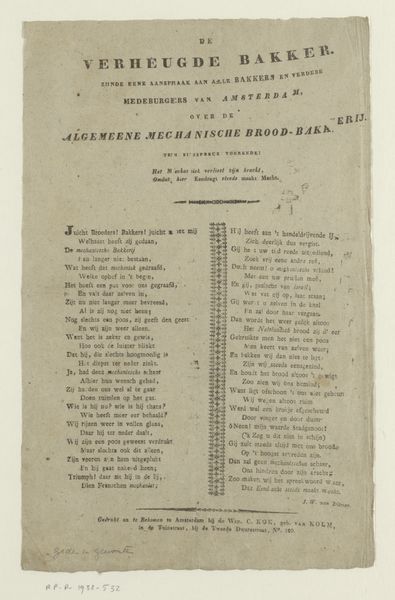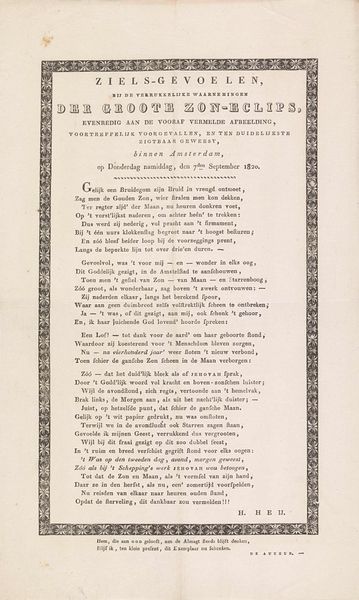
Kennisgeving van het overlijden van Maurits, prins der Nederlanden, op 4 juni 1850 1850 - 1852
0:00
0:00
print, etching, paper, typography
#
neoclassicism
#
parchment
# print
#
etching
#
paper
#
text
#
typography
Dimensions: height 202 mm, width 129 mm
Copyright: Rijks Museum: Open Domain
Editor: Here we have "Notification of the Death of Maurits, Prince of the Netherlands, on June 4, 1850," an etching on paper from around 1850. It’s essentially a printed announcement. The tone seems very formal and somber, even with the decorative border. What layers do you see in a piece like this? Curator: This print resonates deeply when considering the societal norms surrounding death and mourning in the mid-19th century. Notices like these were incredibly important cultural artifacts. What can it tell us about class, power, and even gender roles of the time? Who would have received this notice, and how would they have been expected to respond? Editor: Well, being about a Prince, I imagine it was meant for the aristocracy. Perhaps it functioned to reinforce a sense of shared grief, strengthening social bonds amongst the elite? Curator: Precisely. Notice the emphasis on lineage - "second son of His Majesty Willem III.” This underscores the hereditary nature of power and the anxieties surrounding succession. Think, too, about the visual language of loss. The typography, while ornate, serves to formalize the death. The verse speaks to the parents, to royalty and faith; do you note an appeal for solace outside the terrestrial realm? Editor: I see that. "But look up - your child lives with the Angels!" Almost like a call for composure. So the print becomes both an announcement of death and a carefully constructed message aimed at maintaining social stability. Curator: Exactly. The performative aspect of grief, particularly for those in positions of power, becomes clear. It shows a controlled public narrative, shaping collective memory and solidifying power structures in the face of mortality. Editor: It's fascinating to consider how even something as simple as a printed death notice can reveal so much about the socio-political landscape of the time. Curator: Indeed. It’s in these often-overlooked objects that we uncover the intricate relationships between art, power, and social identity.
Comments
No comments
Be the first to comment and join the conversation on the ultimate creative platform.
